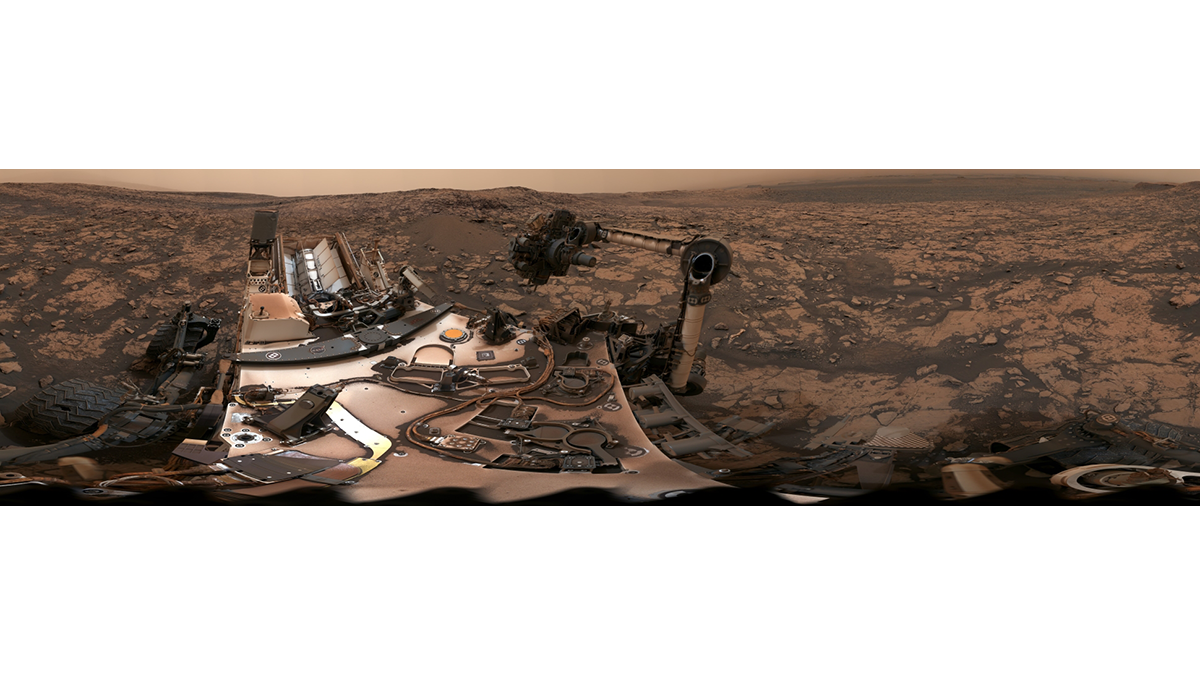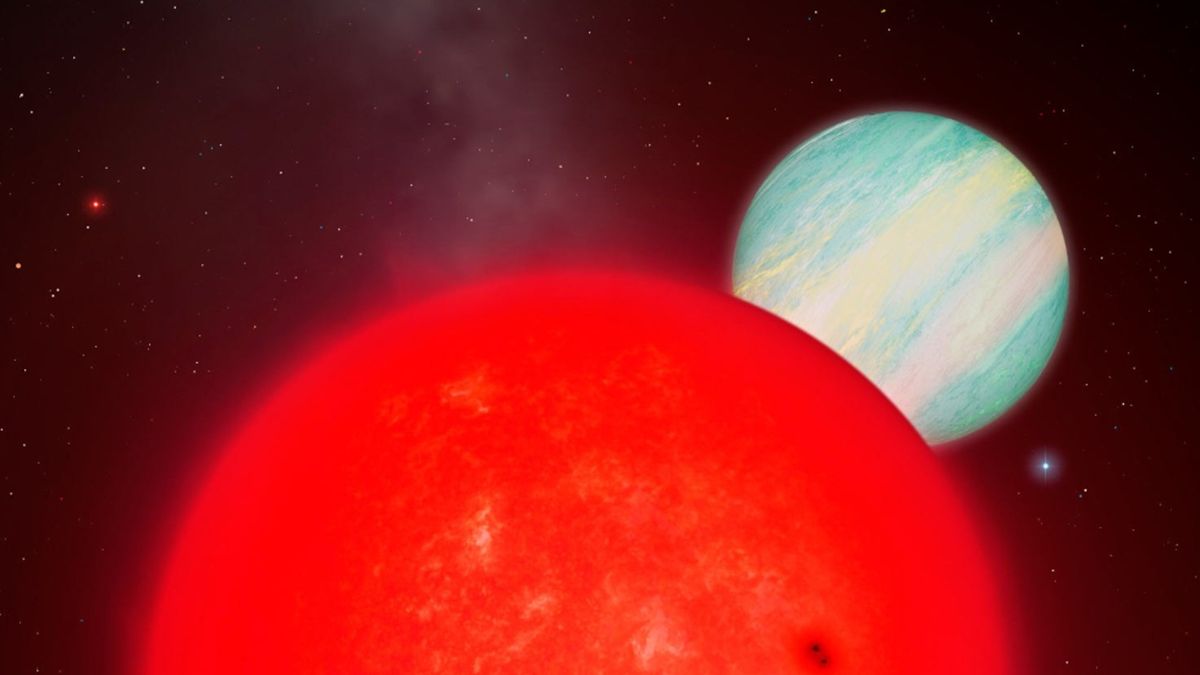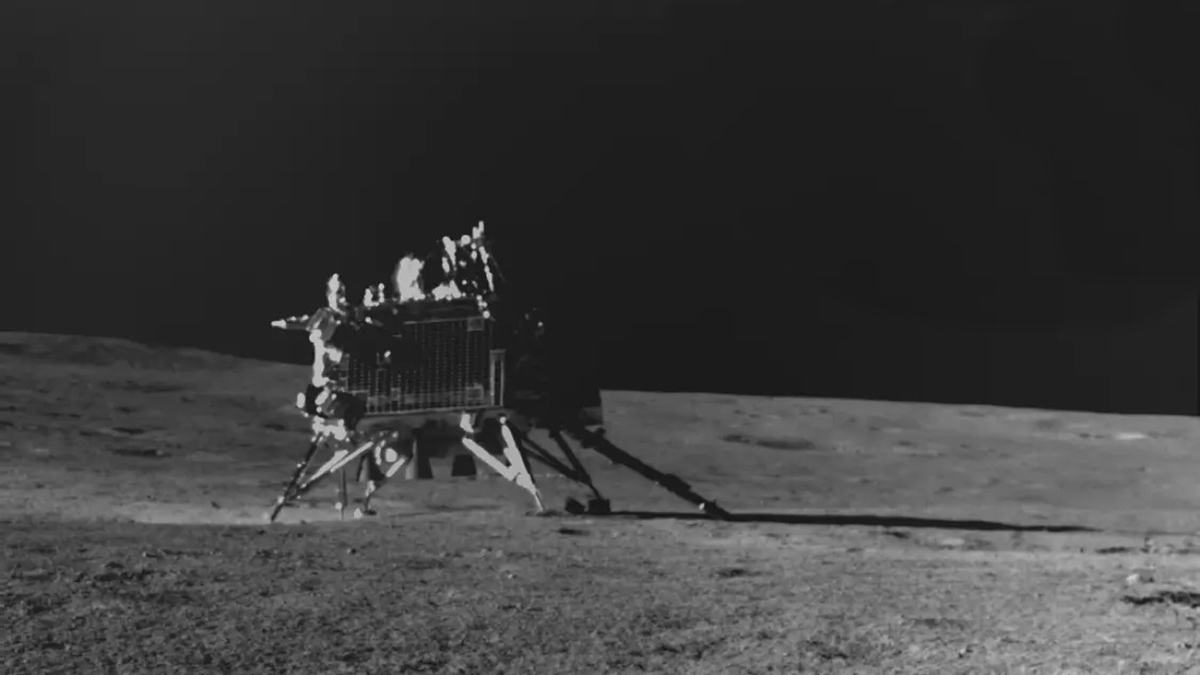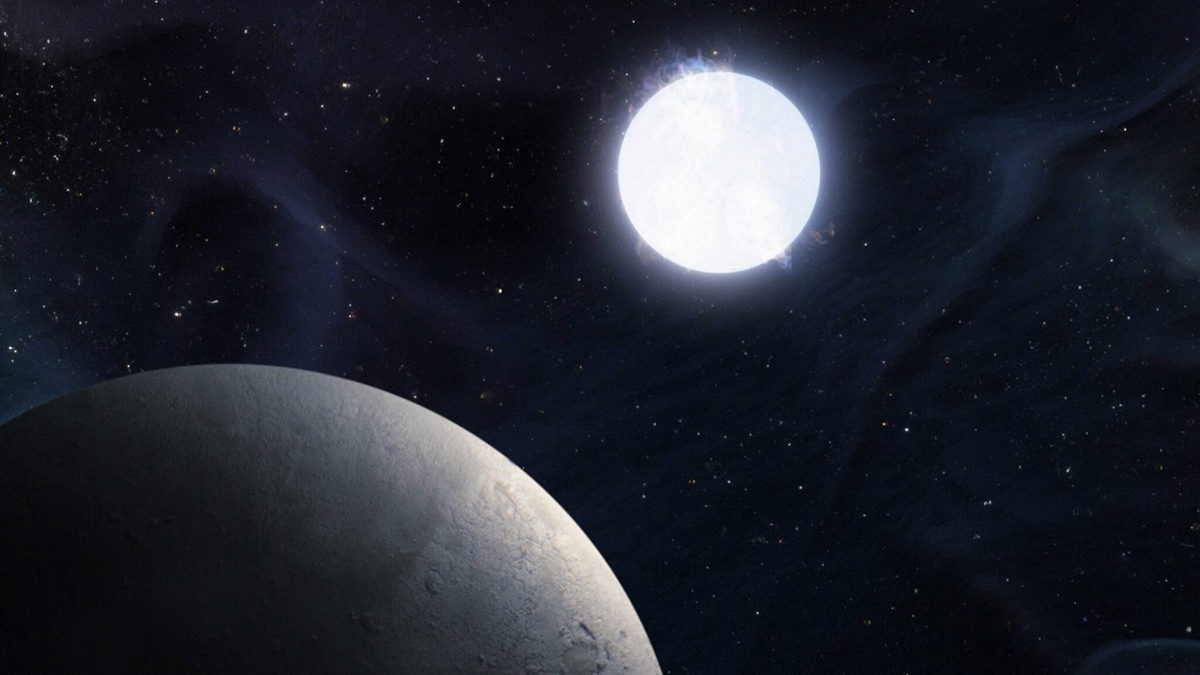Regular, alternating layers in Gale Crater may have been deposited as the result of tides raised by a moon at least 18 times the mass of Phobos, a study says.
Damond Benningfield
Damond Benningfield is a freelance science writer and audio producer in Austin, Texas. Among other projects, he writes and produces StarDate, a daily radio program about astronomy and space exploration, and Science and the Sea, a weekly program about marine science. He has been involved with several other short-format radio programs. Benningfield, a native of Austin, also serves as executive editor of StarDate magazine. He has contributed to almost 50 magazines, newspapers, and websites, including Air & Space/Smithsonian, Smithsonian, and Astronomy. He has a bachelor of journalism degree from The University of Texas at Austin.
A New Exoplanet Resets the Scale
TOI-6894 b, the largest exoplanet relative to its host star yet seen, doesn’t fit the most widely accepted formation model for giant worlds.
Lunar Ice Might Be Easier to Reach Than We Thought
An instrument aboard the Vikram lander suggests that buried water ice could be found at higher latitudes, making it more abundant and easier to extract than previously believed.
Cinturones polvorientos ofrecen una visión más clara de la formación de exoplanetas
Las observaciones en longitudes de onda milimétricas de polvo y guijarros en 74 sistemas estelares sugieren que las migraciones planetarias podrían ser más comunes de lo que pensábamos.
A Super Speedy Star May Be Streaking Through Our Galaxy
Astronomers suggest the star is towing along an exoplanet. The system could be traveling fast enough to escape the Milky Way.
Dusty Belts Provide Clearer Insights into Exoplanet Formation
Millimeter-wavelength observations of dust and pebbles in 74 star systems hint that planetary migrations might be more common than we realized.
Straightening Out Uranus’s Magnetosphere
New analysis of Voyager 2 observations shows that the craft arrived amid gusty solar wind, muddying our ideas about the giant planet.
Earth May Survive the Sun’s Demise
A distant white dwarf hosts an Earth-like planet in an orbit that might be similar to Earth’s if it survives the Sun’s red giant phase.
ALMA Watches the Surface of a Star “Boil”
Observations of R Doradus, a nearby red giant, provide the first timescale for convection on the surface of any star other than the Sun.
Curiosity Digs Up Evidence of a Cold, Wet Martian Past
Amorphous materials, which are rarely studied on Earth, yield insights into the history of Gale Crater and the early Martian environment.










